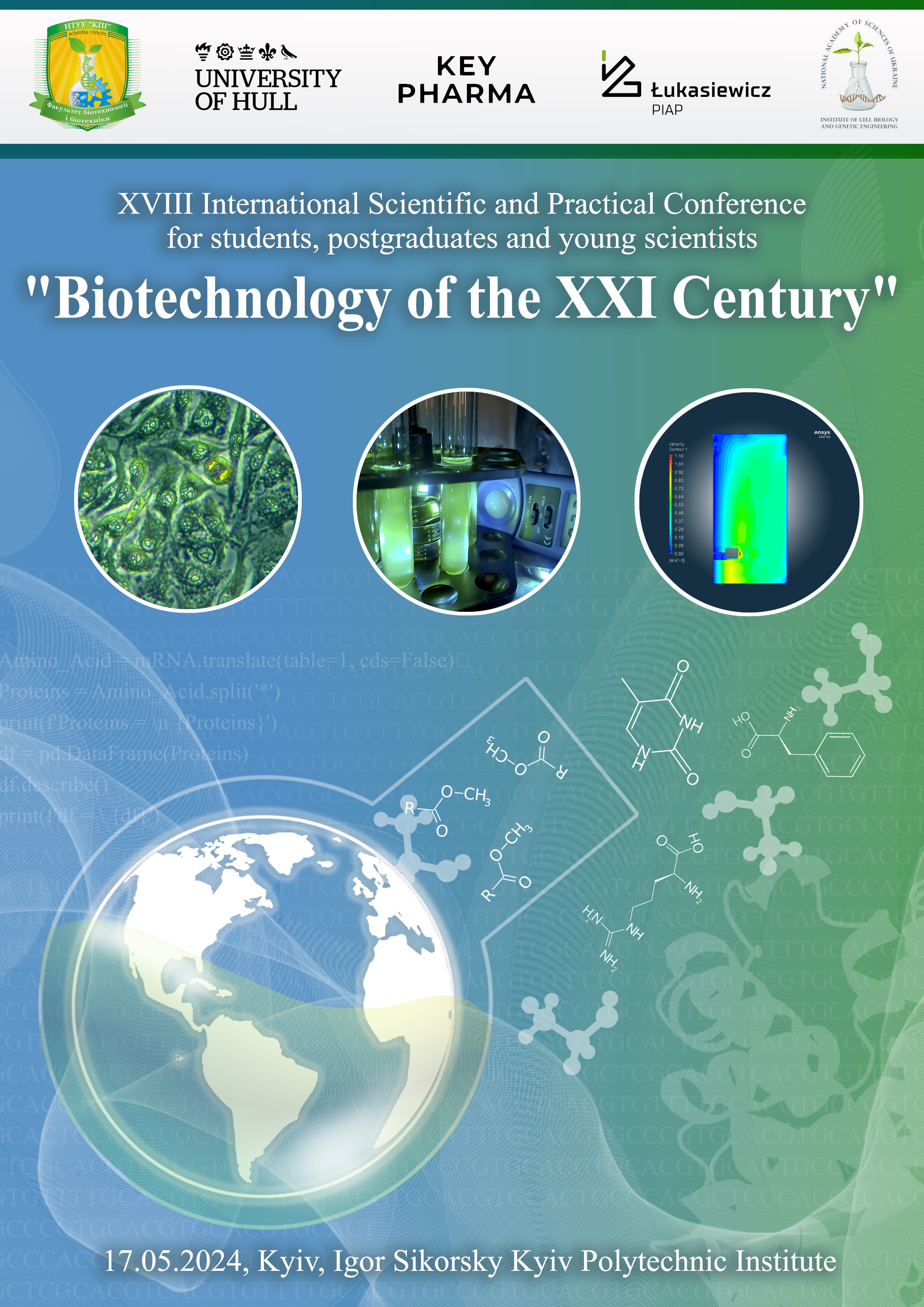ПОРІВНЯЛЬНИЙ АНАЛІЗ МЕТОДІВ КОМП'ЮТЕРНОГО МОДЕЛЮВАННЯ ТРАНСКРИПЦІЙНОГО ФАКТОРА СТРЕСОСТІЙКОСТІ WRKY2 У TRITICUM AESTIVUM
Ключові слова:
protein modelling, machine learning, TaWRKY2, AlphaFold2Анотація
This study conducts a comparative analysis of computational modelling methods, focusing on the transcription factor stress tolerance WRKY2 in wheat (Triticum aestivum). WRKY2 plays a vital role in stress response mechanisms in wheat. Utilizing advanced techniques such as machine learning (in particular, AlphaFold) and homology modelling, the efficacy of these methods in elucidating the structural and functional aspects of WRKY2 was compared. Our findings provide insights into the most suitable computational strategies for studying stress tolerance mechanisms mediated by WRKY2, contributing to the enhancement of crop resilience against environmental stresses.
Посилання
Upadhyay, D., Budhlakoti, N., Kumari, J. et al. (2024). In-silico characterization of drought stress related WRKY2 transcription factor in wheat crop (Triticum aestivum L.): study of its physico-chemical properties and structural dynamics. Genet Resour Crop Evol 71, 1481–1492.
https://www.ncbi.nlm.nih.gov/protein/ACD80357.1/
https://swissmodel.expasy.org/
Muhammed Tilahun, Muhammed, Esin Aki-Yalcin. (2023). Up-to-Date Developments in Homology Modeling. Applied Computer-Aided Drug Design: Models and Methods, 116-135. Bentham Science.
Wei Zheng, Qiqige Wuyun, Yang Li, Quancheng Liu, Xiaogen Zhou, Yiheng Zhu, P. Lydia Freddolino, Yang Zhang. (2023). Integrating deep learning potentials with I-TASSER for single- and multi-domain protein structure prediction. Submitted.
Read, R. J., Baker, E. N., Bond, C. S., Garman, E. F., & van Raaij, M. J. (2023). AlphaFold and the future of structural biology. IUCrJ, 10(Pt 4), 377–379.
Mirdita, M., Schütze, K., Moriwaki, Y. et al. (2022). ColabFold: making protein folding accessible to all. Nat Methods 19, 679–682.
https://www.ipd.uw.edu/2021/07/rosettafold-accurate-protein-structure-prediction-accessible-to-all/
https://www.cgl.ucsf.edu/chimerax/docs/user/tools/esmfold.html
Marcin von Grotthuss, Jakub Pas, Lucjan Wyrwicz, Krzysztof Ginalski, Leszek Rychlewski (2003) Application of 3D-Jury, GRDB, and Verify3D in fold recognition. Proteins: Structure, Function, and Genetics, 53, 418-423.
Lahiri, T., Singh, K., Pal, M. K., & Verma, G. (2012). Protein structure validation using a semi-empirical method. Bioinformation, 8(20), 984–987.
Benkert, P., Künzli, M., & Schwede, T. (2009). QMEAN server for protein model quality estimation. Nucleic Acids Research, 37(suppl_2), W510–W514.
Wiederstein, M., & Sippl, M. J. (2007). ProSA-web: interactive web service for the recognition of errors in three-dimensional structures of proteins. Nucleic Acids Research, 35(suppl_2), W407–W410.
Davis, I. W., Leaver-Fay, A., Chen, V. B., Block, J. N., Kapral, G. J., Wang, X., Murray, L. W., Arendall III, W. B., Snoeyink, J., Richardson, J. S., & Richardson, D. C. (2007). MolProbity: all-atom contacts and structure validation for proteins and nucleic acids. Nucleic Acids Research, 35(suppl_2), W375–W383.

